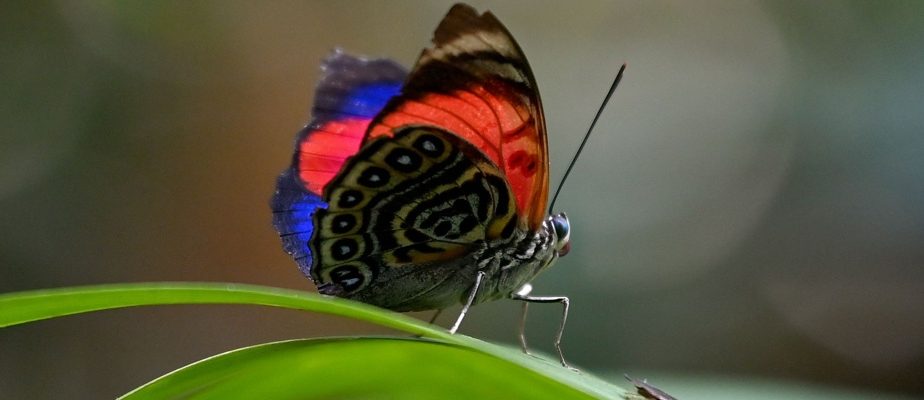(Cuyabeno) The foul smell of rotting fish fills the path in the middle of the jungle. In the Cuyabeno reserve, in the heart of the Ecuadorian Amazon, a team of biologists and forest rangers hung butterfly traps in the branches, these winged jewels filled with information allowing them to measure the devastating effects of climate change.
Inside nets, a glass containing fish or fermented banana bait is intended to seduce adult individuals, whose ephemeral life allows us to understand in the short term the extinction of certain species.
Since August, the team has been carrying out a butterfly monitoring project with the support of the NGO Rainforest Partnership, based in the United States.
The sweat, the long walk and the pestilence are rewarded: in one week, the team collected 169 butterflies, mainly from the nymphalidae family. Of these, 97 were marked on their wings and released. The others, probably belonging to new species, will be studied.
“Deadly” seasons
Biologist Maria Fernanda Checa leads the project and has been studying butterflies in the nearby Yasuni National Park, a biosphere reserve where large oil deposits are being exploited, for ten years.
Its work was extended in 2023 to the Cuyabeno reserve, in the province of Sucumbios, in the northeast of the country. The results will be known soon, but Mme Checa, professor at the Pontificia Universidad Catolica del Ecuador (PUCE), already expects some discoveries.
The number of species that fall into the traps has fallen by 10%, and as for the quantity of individuals, “the decrease is also very significant, we are talking about 50%”, she observes. “It’s something that worries us,” explains M.me Checa to the AFP.
Biologist Elisa Levy, whom AFP accompanied on the expedition, is in charge of monitoring butterflies in Cuyabeno, a forest where trees grow in the middle of lagoons.
While beating the air to scare away the mosquitoes, Mme Levy gives instructions to Ministry of Environment rangers and a student.
“Don’t touch the wings!” They come off, and it’s like skinning them,” she warns her team who return to the rainforest every two months to hunt the precious lepidoptera.
Domino effect
Researchers hold the butterflies’ abdomens in their hands, gently blow on their torsos so they retract their legs and, using forceps, spread their multi-colored wings. It’s an enchanting explosion of bright reds and blues, markings that simulate predatory eyes and patterns similar to the spotted fur of jaguars or the stripes of zebras.
“By a simple color, a small line, we can already tell that it is another species. It’s exciting,” marvels forest ranger Nilo Riofrio, who is able to catch butterflies in mid-flight without hurting them.
Butterflies are “bioindicators”, meaning they are “very sensitive, even to small changes in the ecosystem”, due to their life cycle which begins with eggs, then caterpillars and finally a brief adult life, explains Mme Checa. Dry seasons in particular “are deadly” for insects.
Mme Levy explains the domino effect of the climate crisis on the ecosystem. “If the host plant (on which the caterpillar feeds) does not adapt to these climatic changes, the butterfly will not be able to survive.”
” Serious problem ”
In Ecuador there are around 4,000 species of butterflies, a number close to that of neighboring countries Peru and Colombia, which are four times larger.
In tropical areas, butterflies are not adapted to climate changes, as is the case in four-season countries in regions with more temperate climates.
“If the climate cools or warms (to excessive temperatures), they don’t have much chance of adapting quickly,” warns Mme Levy.
According to a document published by the Food and Agriculture Organization of the United Nations (FAO) in 2023, some 35% of the planet’s insect species are threatened with extinction.
“This is a serious problem for us” because of the functions they perform in nature, such as pollination, underlines Mme Checa. And the worst part is that in very diverse places like the Yasuni reserve, “the rate of species discovery is slower than the rate of extinction,” she adds.
